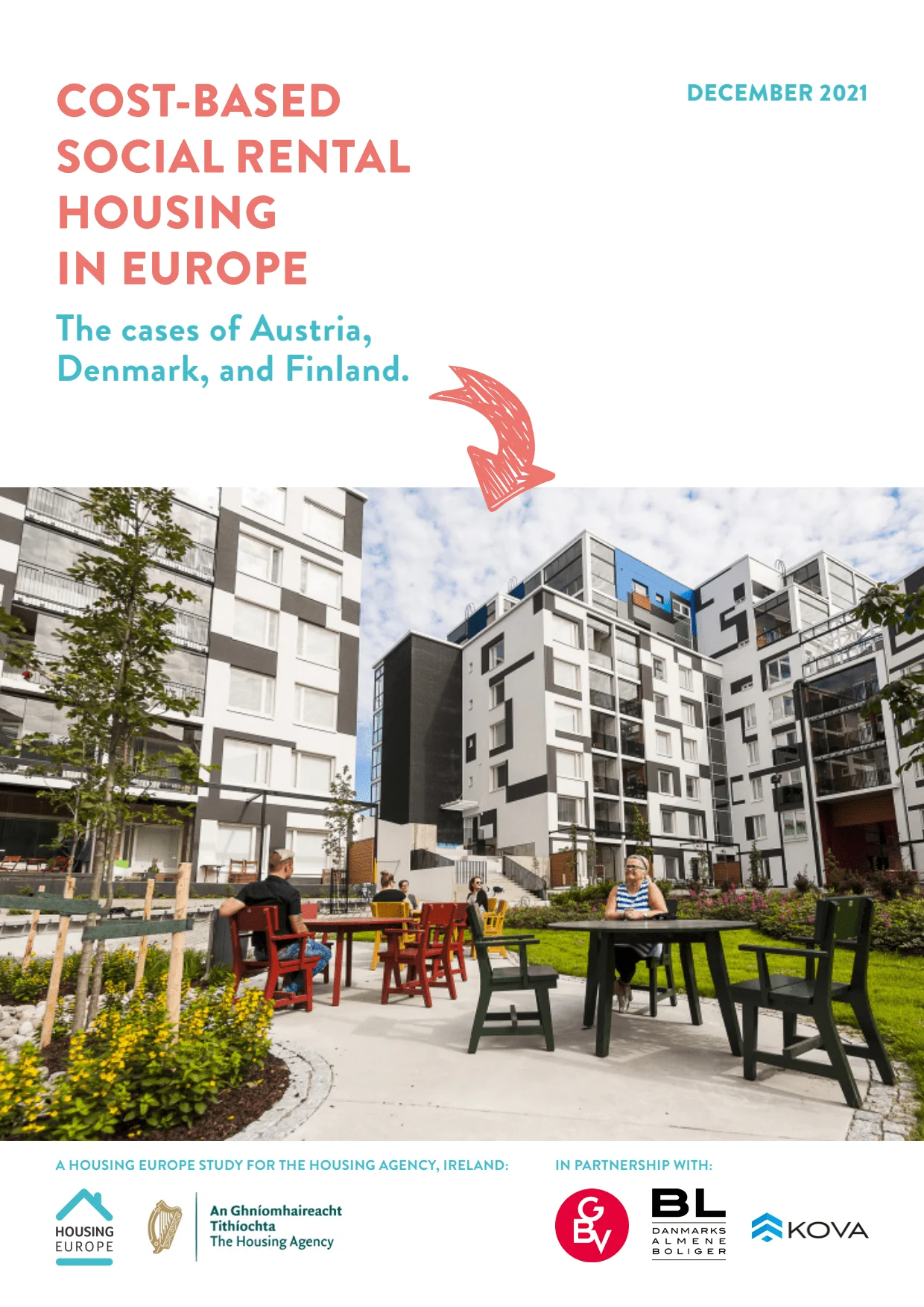Context and Purpose
This report, titled "Cost-based Social Rental Housing in Europe," was published in December 2021 as part of a study conducted by Housing Europe, the European Federation of Public, Cooperative and Social Housing, in collaboration with the Housing Agency of Ireland. The authors, including Alice Pittini and Dara Turnbull among others, aim to analyze the social rental housing systems of Austria, Denmark, and Finland, focusing on cost-based models that provide affordable housing solutions.
Key Findings
The report outlines that approximately 11% to 24% of the housing stock in the examined countries is composed of cost-based social rental housing. In Austria, social housing accounts for 24% of the total housing stock, with 944,100 units provided mainly by limited-profit housing associations (LPHAs). Denmark's non-profit housing sector comprises 20% of the housing stock, while Finland features around 11% of its housing stock categorized as social housing, with an additional 2% in the right-of-occupancy sector.
Funding Mechanisms
The financing of social housing varies significantly among the three countries. Austria's LPHAs typically utilize a mix of public loans (30-40%), bank loans (30-40%), and tenant equity contributions (approximately 5-10%) to fund new developments and renovations. Denmark primarily relies on mortgage loans (86-90%) supported by state guarantees, supplemented by municipal loans (8-12%) and tenant equity (2%). In Finland, private loans constitute 95% of funding, with the government providing guarantees to reduce lending risks.
Regulatory Frameworks
Each country has established regulatory frameworks that dictate the cost-based rental systems. Austria's "Limited-Profit Housing Act" outlines eligibility and responsibilities for housing providers, ensuring that housing remains affordable and accessible to a broad spectrum of the population, including those with urgent housing needs. Denmark's non-profit housing operates under a universalist approach, allowing anyone to apply for housing, though municipalities can prioritize urgent cases. Finland's system operates on a cost-recovery principle, allowing for rent equalization among properties, which can alleviate pressure on lower-income tenants.
Case Studies and Examples
The report includes several case studies highlighting the practical application of these systems. For instance, an Austrian LPHA development completed in 2020 features 73 flats with monthly rents averaging €627.50 for an 82 m² unit. In Denmark, a non-profit housing project provides 89 family units at an average rent of €1,122.65. Finland's social housing development showcases a monthly rent of €14.40 per square meter, significantly lower than the average market rent.
Conclusion
The findings emphasize the importance of long-term planning and sustainable funding models in providing affordable housing. The cost-based approach allows for the development of diverse and stable communities. The report serves as a guide for other countries looking to implement or enhance their social housing frameworks, illustrating successful models while advocating for the right to affordable housing as a fundamental aspect of social welfare.
